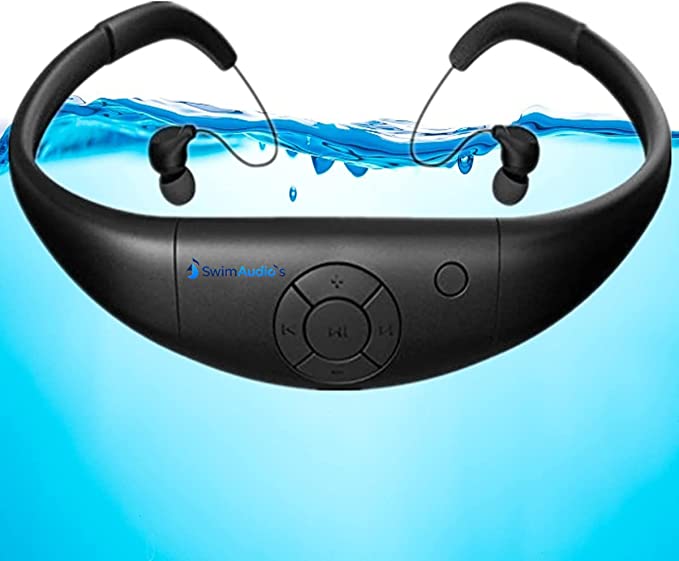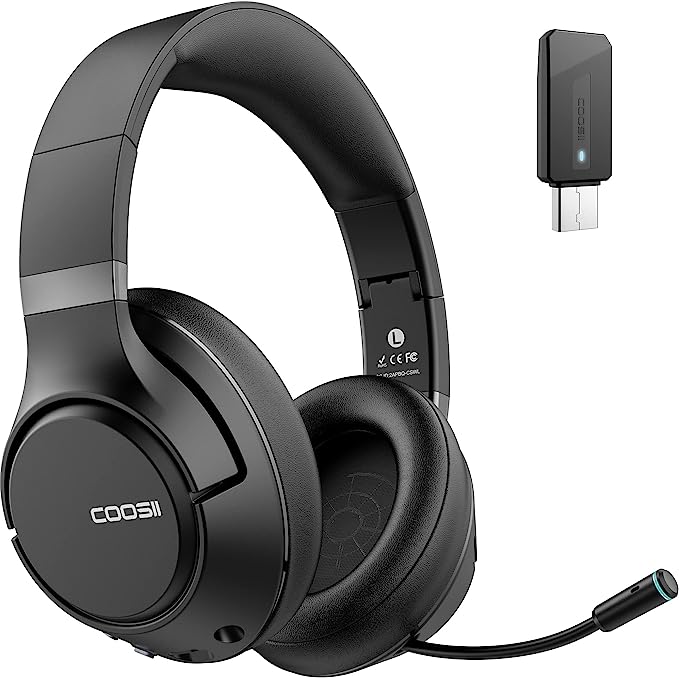We live immersed in sound. Yet, paradoxically, as our personal audio technology has become more sophisticated, it has often led us down a path of isolation. We crave the rich immersion of our favorite music or podcasts, delivered with ever-increasing fidelity. But we also exist in a dynamic physical world, one that demands our attention for safety, connection, and simply feeling present. The sleek, noise-canceling earbuds that transport us sonically can simultaneously cut us off from the chirp of a bird, the approaching footsteps of a colleague, or the critical sound of traffic. This is the modern listener’s dilemma: how do we reconcile our desire for personal audio with our innate need to remain connected to our surroundings?
Enter a distinct branch in the evolution of personal audio: the open-ear headphone. This category represents a conscious shift away from sealing the ear canal, proposing a different way to listen – one where your personal soundtrack and the world’s ambient score can coexist. These devices aren’t simply another type of earbud; they embody a different philosophy of listening. The TRAUSI T6 Open Ear Headphones, based on their product description, appear to be one example harnessing several technologies within this paradigm. But beyond specific product claims, what is the science that makes open-ear listening possible? What are the real benefits, the inherent challenges, and the engineering feats involved? Let’s embark on an exploration into the fascinating intersection of acoustics, electronics, ergonomics, and human perception that defines open-ear audio.

The Physics and Feeling of Openness: Why Unblock Your Ears?
At its core, the concept of open-ear audio is elegantly simple: it aims to deliver sound to your auditory system without plugging or covering the ear canal. Think about how you normally listen to music playing from speakers in a room. Sound waves travel through the air, enter your ear canal naturally, and are processed by your ear and brain. Most open-ear headphones strive to replicate a similar, albeit more personalized, experience. They typically position small speakers near the entrance of the ear canal, directing sound towards your eardrum using standard air conduction – the same way you hear most sounds every day. (This is distinct from bone conduction technology, which bypasses the outer and middle ear entirely by vibrating the bones of the skull, a different approach with its own set of characteristics).
Why pursue this unblocked approach? The advantages lie in addressing fundamental aspects of human hearing and comfort.
Firstly, there’s the critical element of situational awareness. Our auditory system is a marvel of evolution, constantly scanning the environment, helping us locate sound sources, identify potential dangers, and feel grounded in our surroundings. Blocking the ear canal significantly impedes this natural intake of ambient information. An open design, by contrast, allows these environmental sound waves largely unimpeded access. The description for the TRAUSI T6 emphasizes “Safety for Driving,” a scenario where hearing sirens, horns, or other vehicles is paramount. This isn’t just a feature; it’s a direct consequence of the physics – letting the world’s sounds reach your ears as nature intended. Psychoacoustically, maintaining this connection to ambient sound helps our brain construct a more complete and accurate sense of space and presence.
Secondly, comfort, especially during extended wear, is a major driver. Many users find traditional earbuds that insert into the ear canal uncomfortable due to pressure, heat build-up, or the strange sensation known as the occlusion effect (that feeling of your own voice booming inside your head when your ears are plugged). An open-ear design inherently avoids inserting anything into the canal. The TRAUSI T6 description claims “Unmatched Comfort” and a “breathable and open fit.” From an ergonomic standpoint, resting outside the canal eliminates direct pressure within it and allows for natural airflow, potentially making them significantly more comfortable for long work sessions, workouts, or commutes.
The Engineer’s Tightrope: Crafting Sound Without Walls
While the concept of open-ear listening is appealing, the engineering reality is a delicate balancing act – a sonic tightrope walk. Delivering satisfying audio quality without the benefit of a seal around or inside the ear presents significant acoustic challenges.
At the heart of sound reproduction lies the driver, the component converting electrical signals into audible vibrations. The T6 specifications mention large “16.2mm speaker drivers.” Physics tells us that a larger diaphragm surface area can potentially move more air, which is generally beneficial for reproducing lower frequencies (bass). The T6 description indeed claims “powerful bass and bright treble.” However, driver size alone doesn’t guarantee quality; the driver’s material, construction, magnetic system, and sophisticated tuning are equally, if not more, critical. More importantly, in an open design, achieving impactful bass is inherently difficult because low-frequency sound waves tend to radiate outwards in all directions and require a sealed volume to build pressure effectively against the eardrum.
This leads to the primary acoustic hurdle: sound leakage and bass response. Without a seal, sound generated by the drivers can easily “escape” into the surrounding environment, meaning people nearby might hear your audio. Conversely, external noise can more easily interfere with your listening experience. Furthermore, that lack of seal makes generating deep, resonant bass particularly challenging. Engineers employ various strategies to combat this. The T6 description vaguely refers to an “in-ear acoustic structure support” and a “unique chamber acoustic design” intended to “balance internal and external air pressure to avoid sound loss.” While the specifics are unclear from this marketing language, these phrases likely point to attempts at acoustic engineering – using precisely shaped chambers, waveguides, or phase manipulation techniques – to direct sound more efficiently towards the ear canal, enhance perceived bass, and perhaps minimize leakage. Achieving clear, full-range sound that is satisfying to the listener and discreet to others is the core engineering challenge of open-ear audio. It often involves a fundamental trade-off: prioritizing openness and awareness may mean compromising on the sheer impact, deep bass, and noise isolation offered by traditional sealed designs.
Cutting the Cord, Intelligently: The Wireless Backbone
The freedom of wireless audio is now almost taken for granted, thanks largely to the evolution of Bluetooth technology. From its early days enabling clunky headsets, Bluetooth has matured significantly, becoming the standard for untethered personal audio. The TRAUSI T6 description specifies Bluetooth 5.3. Understanding what this means requires looking at the technology’s progression.
Each major Bluetooth revision typically brings improvements. Bluetooth 5.0 introduced higher speeds and longer ranges (primarily for non-audio applications). Versions like 5.1, 5.2, and 5.3 have focused on refinements such as improved location services (less relevant for audio), better coexistence with other wireless signals, enhanced security, and, importantly, improvements in Low Energy (LE) Audio standards (though device implementation varies). Generally, compared to much older versions (like Bluetooth 4.x), Bluetooth 5.3 can offer improved power efficiency (contributing to longer battery life), potentially more stable and robust connections, and potentially lower latency (the delay between audio source and playback), although the actual performance heavily depends on both the transmitting device (your phone or computer) and the receiving device (the headphones) and the specific Bluetooth profiles being used (like A2DP for stereo audio).
Beyond the core Bluetooth version, convenience features enhance the user experience. The T6 description highlights “Fast Pairing” enabled by a “hall switch.” This isn’t magic, but simple, clever physics. A Hall effect sensor detects changes in a magnetic field. By placing a small magnet in the charging case lid and a Hall sensor in the case body (or vice-versa), the earbuds can instantly detect when the case is opened. This event triggers them to power on and automatically initiate the pairing process with the last connected device. It’s a small touch, but one that streamlines the daily ritual of using wireless earbuds, making the connection feel more instantaneous and seamless.
Powering the Unplugged Experience: The Science of Battery Life
All this wireless technology needs power, and in the world of portable electronics, the reigning champion is the Lithium-Ion (Li-ion) battery. The T6 description mentions “high-density lithium batteries.” Li-ion chemistry revolutionized portable devices because it offers a high energy density – meaning it can store a lot of energy in a relatively small and lightweight package compared to older battery technologies like Nickel-Cadmium (NiCd) or Nickel-Metal Hydride (NiMH). This allows for compact devices like earbuds to run for hours. The basic principle involves lithium ions moving between the battery’s negative electrode (anode) and positive electrode (cathode) through an electrolyte during charging and discharging cycles, creating an electrical current.
Manufacturers constantly strive to maximize playtime. The T6 claims a substantial duration: “10 hours of continuous playback on a single charge” for the earbuds themselves, plus an “additional 40 hours” provided by the charging case, leading to a total claimed playtime of “up to 50 hours.” If accurate under real-world listening conditions (volume levels, connection stability, temperature all play a role), this represents significant endurance, potentially covering several days of typical usage or long trips without needing to find a power outlet for the case.
When the battery eventually depletes, charging speed becomes important. The T6 description touts “fast charging technology,” providing a specific metric: “1 hour of playback with just 5 minutes of charging.” Fast charging generally works by increasing the electrical power (voltage and/or current) delivered to the battery, especially during the initial phase of charging when the battery is low. Sophisticated battery management systems are required to do this safely, monitoring temperature and charge levels to prevent damage and optimize battery lifespan. Think of it like filling a bottle – you can pour water in faster initially, but you need to slow down as it gets full to avoid spilling. A quick 5-minute charge providing an hour of use can be incredibly convenient for users caught with low battery just before heading out. Finally, the mention of an “LED Digital Display” (in the product title) suggests a utility feature, likely on the case, allowing users to visually monitor the remaining charge level of the case and possibly the earbuds.
Living with Open Ears: Scenarios, Strengths, and Sober Considerations
So, where does a technology like open-ear audio truly find its place? The TRAUSI T6 description suggests scenarios like “Sports and Workouts,” “Driving,” “video calls,” and general music listening. These align well with the inherent strengths we’ve discussed:
- For athletes (runners, cyclists): Maintaining awareness of traffic, other people, or nature sounds is crucial for safety. The potentially more stable fit of an over-ear hook design (implied by the “Over Ear Form Factor” listing, though many open-ear devices use this style) and sweat resistance (see caveat below) are also key.
- For drivers: As emphasized, hearing the surrounding traffic environment is non-negotiable for safety. Hands-free calling capability adds convenience.
- For office workers or those at home: Open-ear allows staying aware of colleagues, family members, or deliveries without constantly removing earbuds. It facilitates brief interactions naturally.
- For casual listening while multitasking: Listening to a podcast while doing chores or walking the dog becomes safer and less isolating.
However, it’s crucial to approach some claims with scientific scrutiny and understand the limitations:
- “Noise-Cancelling Calling”: This term requires clarification. It almost certainly refers to technologies like Environmental Noise Cancellation (ENC) or Clear Voice Capture (CVC), which use microphones to detect and reduce background noise around the speaker so that the person on the other end of the call hears them more clearly. It does not typically mean Active Noise Cancellation (ANC) for the person wearing the headphones, which electronically cancels out ambient sound for the listener. Open-ear designs are fundamentally incompatible with effective ANC for the listener, as they don’t create the necessary seal.
- “Waterproof”: This claim is problematic without specifics. Water resistance in electronics is quantified using the Ingress Protection (IP) rating system (e.g., IPX4 indicates resistance to splashes from any direction, IPX7 allows temporary immersion). The provided T6 information simply states “Waterproof” without an IP rating. This makes the actual level of protection ambiguous. Users should be cautious about exposure to significant moisture or submersion unless a specific IP rating is confirmed.
- Fit and Form Factor: The product information lists “Over Ear” as the Form Factor. While some open-ear designs use substantial over-ear structures, many popular ones utilize an ear-hook style that rests on or above the ear, rather than fully enclosing it like traditional over-ear headphones. Without images, the exact T6 form is inferred, but users should be aware of the different styles within the open-ear category.
Ultimately, choosing open-ear headphones involves embracing a fundamental compromise. You gain unparalleled situational awareness and potentially greater long-term comfort. In return, you typically sacrifice the deep bass immersion, passive noise isolation, and potentially the overall audio fidelity achievable with well-sealed in-ear or over-ear headphones. It’s not inherently better or worse; it’s a different tool for a different set of priorities and listening contexts.
Conclusion: The Future is Listening, Openly?
The journey into the science behind open-ear audio reveals a fascinating interplay of acoustics, electronics, material science, and human perception. Devices like the TRAUSI T6, based on their described features, represent attempts to harness these principles – leveraging air conduction for awareness, employing ergonomic designs for comfort, tackling acoustic challenges with driver and chamber engineering, utilizing modern Bluetooth for seamless connectivity, and packing impressive endurance with advanced battery technology.
The value proposition of open-ear audio lies in its ability to integrate digital sound into our lives without disconnecting us from our physical reality. It acknowledges that sometimes, the most important sounds are not the ones playing through the drivers, but the ones happening around us. While the technology necessitates certain acoustic trade-offs, particularly concerning bass response and noise isolation, the benefits of enhanced safety, comfort, and ambient awareness resonate strongly with many users in specific situations.
As technology continues to advance – perhaps with more sophisticated directional sound techniques, improved driver performance in open configurations, or even integration with augmented reality cues – the line between personal audio and environmental sound may continue to blur. The future of listening might indeed be more open, allowing us to curate our sonic world while remaining fully present within it. Open-ear headphones, therefore, are more than just a gadget; they are a window into a potential future of how we experience sound and interact with the world.


